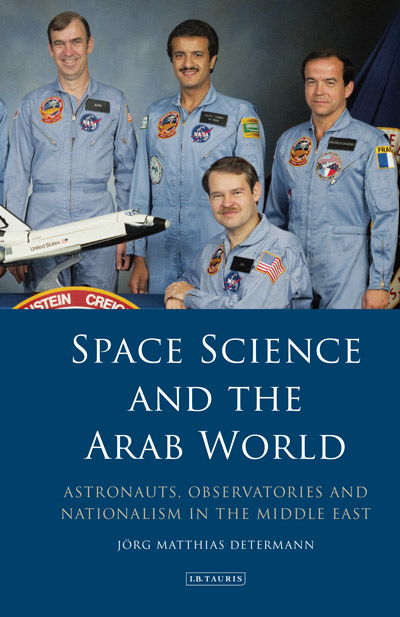Using AI to control energy for indoor agriculture
30 September 2024
Published online 31 January 2018
Sedeer el-Showk on a history of modern space science in the Arab world.

Jörg Matthias Determann’s Space Science and the Arab World makes no claim to close this gap, focusing instead on its later stages. This shift from the seeming zenith of Islamic accomplishment to the modern world is a refreshing perspective for a history of Arab science.
Determann traces the history of Arab space science since the late 19th century, following its successes and failures in the changing fortunes and political landscape of the region.
Throughout, he describes Arab space science as part of an international network of modern research, enmeshed in the same web of institutions and interests. Nationalism and cosmopolitanism are the threads with which Determann weaves the narrative. Over and over in his history, projects are launched for nationalistic reasons but end up producing a cosmopolitan view — “a vision of a planet without borders” — at least in the core participants.
Much of the research is also inherently international, such as Morocco’s Oukaïmeden observatory contributing to the discovery of seven Earth-like planets around TRAPPIST-1 or Egypt’s Helwan observatory’s participation in laser ranging research. Nationalism — in the form of military interests — made rocket science an attractive investment for governments, but Determann shows that “nationalism as warmongering was also obstructive or destructive.”
In Egypt and Algeria, rocketry began with the recruitment of German V-2 engineers, while Lebanon’s rocketry programme began as a student society at the but was eventually taken over by the military and dismantled after the 1967 war with Israel. In the interlude between Iraq’s war with Iran and its invasion of Kuwait, the Iraqi Space Research Center launched a test satellite which “completed six orbits before burning up on re-entry.”
However, the combination of wars and sanctions effectively crippled Iraq’s civilian space research programme, and many Iraqi scientists and engineers left the country in search of opportunities elsewhere. Nationalism also drove capacity building efforts, such as the insistence by the Egyptian government in the 1920s “that any new astronomer appointed by the Helwan Observatory should be Egyptian rather than English.”
Egypt, Saudi Arabia, and other Arab states sent students to study in Europe and the USA and bring home advanced technical knowledge. Those who returned brought not only knowledge but also international networks that would be crucial to their scientific success, once again highlighting the interplay between nationalism and cosmopolitanism that runs through Determann’s account.
Rhetoric about the heritage of Islamic science was often used to promote regional cooperation, such as become the dream of an Arab Space Agency, but these often failed to materialize. However, satellite fleets are indispensable as tools for communication, broadcasting media, and monitoring the planet’s surface, and Determann describes the sometimes-troubled history of the pan-Arab satellite organization Arabsat and national companies such as Nilesat and Yahsat.
Research centers such as the Helwan Observatory and the Lee Observatory in Beirut also helped build networks that straddled both sides of the Cold War. The clear skies of North Africa are ideal for observing solar eclipses, and scientists from around the world would congregate at the Helwan observatory to photograph them.
Research on variable stars benefits immensely from continuous observation, which called for observatories at different longitudes, including across North Africa and the Middle East.
The same reasoning today underpins the presence of a meteor observation station in the UAE. Biographies of several significant Arabs in modern space science are used to reinforce Determann’s themes. Farouk El-Baz and Essam Heggy serve as exemplary cosmopolitan space scientists, building careers that spanned Egypt, the USA, Europe, and the wider Arab region. On the other hand, the tales of the first two Arabs in space reflect the role of national interests and geopolitics in the region’s space programmes, with Saudi Prince Sultan bin Salman flying on the space shuttle Discovery and Syrian fighter pilot Mohammed Fares visiting Mir in a Soyuz craft.
Nevertheless, their stories also reinforce the cosmopolitan spirit and outcomes of space research: the Arab astronaut and cosmonaut both returned transformed by the experience of looking down on our planet without “the urge to find boundaries between states and countries” as “the world becomes a globe of seven continents and seas.”
Space Science and the Arab World1 was published on January 30, 2018.
doi:10.1038/nmiddleeast.2018.13
Stay connected: